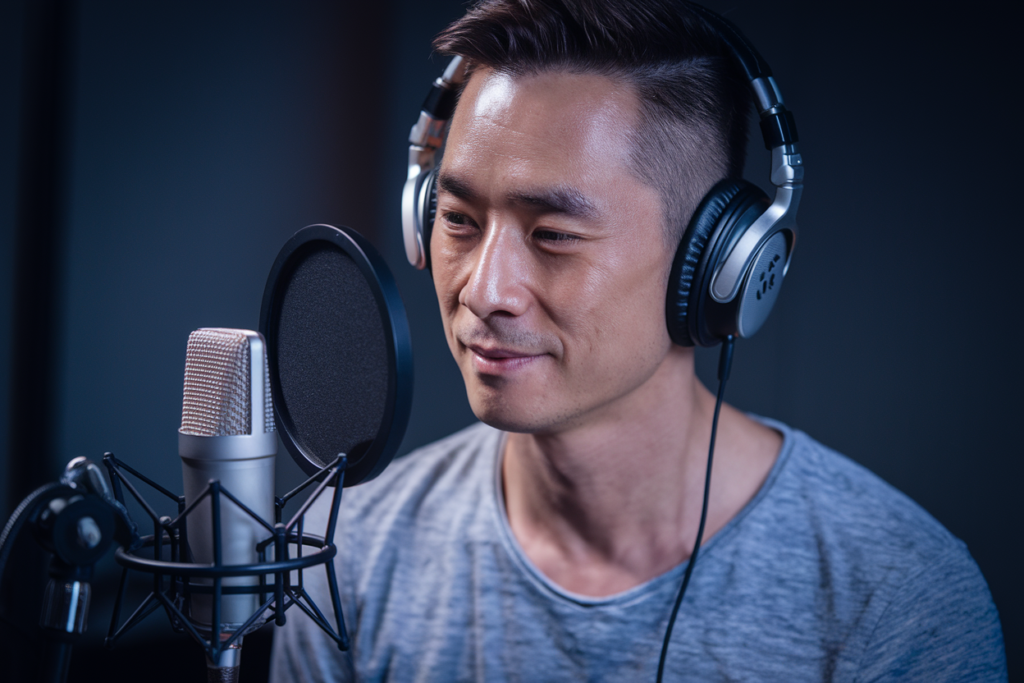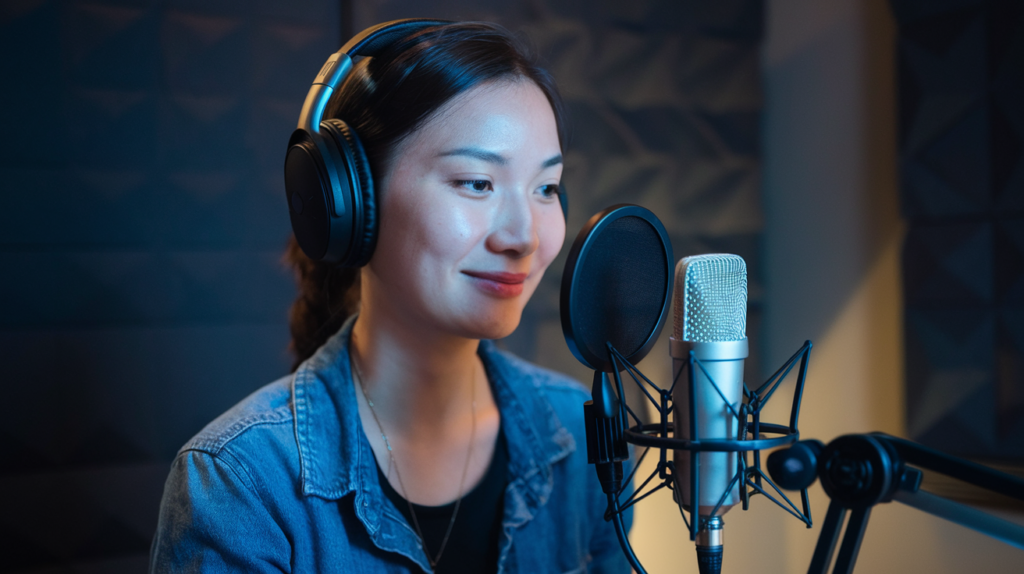Key Takeaways
- Dubbing Chinese films and TV shows involves more than translation; it requires capturing cultural nuances, emotions, and the original language’s unique sounds.
- Skilled voice talent is essential for maintaining character authenticity while ensuring lip-sync accuracy and emotional depth in performances.
- Cultural understanding is crucial as certain phrases and traditions in Chinese culture may not translate directly, impacting viewer comprehension and connection.
- Technical challenges, including synchronization issues and sound engineering quality, greatly affect the final dubbing product’s effectiveness.
- Audience perception of dubbing varies; some prefer subtitles while others favor well-executed voiceovers that enhance engagement without losing context.
- Current trends emphasize high-quality voiceovers that respect cultural nuances and utilize advanced technology to create relatable content for global viewers.
Ever wondered why some Chinese films and TV shows just don’t hit the mark when dubbed? The challenges of dubbing Chinese films and TV are more complex than you might think. It’s not just about translating words; it’s about capturing cultural nuances, emotions, and even the unique sounds of the original language.
When you dive into the world of dubbing, you’ll quickly realize that it’s a fine art. From matching voice tones to ensuring lip-sync accuracy, every detail matters. If you’ve ever cringed at a poorly dubbed scene, you’re not alone. Understanding these hurdles can deepen your appreciation for this intricate process and highlight the skill involved in making foreign content accessible to global audiences.
Overview of Dubbing in Chinese Films and TV
Dubbing in Chinese films and TV goes far beyond simple translation. It involves a careful blend of art and technique, ensuring that every voice matches the emotion and intent of the original performance. You’ll notice how critical it is to capture cultural nuances; these subtleties can significantly affect audience perception.
When you hear a character’s line delivered by a voice actor, it’s not just about words. It’s about conveying feelings, personality, and authenticity. Voice talent must adapt their performances to maintain the spirit of the original dialogue while fitting seamlessly into lip movements. This task requires skilled voice artists who understand both languages deeply—the source language and the target one.
Voiceovers play an essential role in this process as they provide clarity for viewers unfamiliar with Mandarin or other Chinese dialects. Accurate voice over work ensures that stories resonate with diverse audiences worldwide. The selection of appropriate voice over talent significantly influences how well viewers connect with characters.
The technical aspects also matter—sound engineering needs precision to match audio levels so that nothing distracts from the storytelling experience. Achieving perfect synchronization takes meticulous effort from everyone involved, including directors who oversee each dubbing session.
Dubbing Chinese films and TV shows demands expertise across various domains: linguistic skills, acting ability, cultural knowledge, and sound engineering proficiency—all crucial for creating compelling content that captivates global audiences.
Cultural Differences
Dubbing Chinese films and TV shows involves navigating rich cultural landscapes. It’s not just about translating words; it’s about conveying the essence of a culture that may differ significantly from your own.
Nuances in Language
Language carries deep cultural meanings that often don’t translate directly. For instance, certain phrases in Mandarin express emotions or social norms unique to Chinese culture. When voice actors step into the shoes of characters, they must capture these subtleties through their performances. Misinterpretation can lead to loss of context, humor, or even emotional depth. Skilled voice talent understands this challenge and adapts their delivery accordingly, ensuring the essence remains intact while resonating with an international audience.
Representation of Traditions
Chinese films often reflect traditions that might be unfamiliar to global viewers. Concepts like filial piety or specific cultural references require careful handling during dubbing. Voiceover artists must embody these traditions authentically, allowing audiences to grasp their significance without prior knowledge. This representation is crucial for fostering understanding and connection among viewers from different backgrounds, making it essential for voice over talent to deliver performances that honor these cultural elements while remaining engaging and relatable.
Technical Challenges
Dubbing Chinese films and TV shows presents several technical challenges that demand expertise and precision. The process involves more than just translating dialogue; it requires a deep understanding of synchronization, sound engineering, and production quality.
Synchronization Issues
One major hurdle in dubbing is achieving lip-sync accuracy. Voice actors must match their performances to the original on-screen movements. This challenge becomes even more complex with rapid dialogues or emotional scenes, where timing is crucial. If voiceovers don’t align well with the visuals, viewers may find themselves distracted, losing connection with the story. Skilled voice talent can navigate these nuances effectively, ensuring that every word feels authentic and engaging.
Quality of Production
The overall quality of production significantly impacts the final result in dubbing projects. High-quality sound engineering ensures clear audio without distractions from background noise or distortion. When working on Chinese content, it’s essential for voice artists to maintain vocal clarity while capturing cultural tones and emotions inherent in the original language. Additionally, advanced technology plays a critical role—using top-notch recording equipment allows voiceover talent to deliver performances that resonate with audiences worldwide. A polished final product not only enhances viewer experience but also reflects professionalism and attention to detail in the dubbing process.
Audience Perception
Audience perception plays a crucial role in the success of dubbing Chinese films and TV shows. It determines how well viewers connect with the content, influencing their overall experience. Dubbing isn’t just about translating words; it’s about making sure that emotions and cultural nuances resonate with diverse audiences.
Acceptance of Dubbing
Acceptance of dubbing varies significantly among viewers. Some prefer subtitles, believing they capture original performances more accurately. Others appreciate well-executed voiceovers, which can make the viewing experience smoother and less distracting. The key lies in selecting skilled voice talent who can deliver authentic performances that align with original characters. When voice actors embody roles convincingly, they can help bridge cultural gaps, allowing viewers to immerse themselves fully in the story without losing context.
Impact on Viewer Experience
The impact of dubbing on viewer experience can’t be overstated. Quality voiceovers enhance engagement by providing clarity for those unfamiliar with Mandarin or other Chinese dialects. When performed effectively, these voices breathe life into characters, enabling audiences to feel emotions deeply and connect with narratives meaningfully.
However, poor dubbing can detract from enjoyment. Mismatched tones or awkward phrasing disrupt immersion and may confuse viewers about character intentions or plot points. This highlights the importance of precision during sound engineering processes—clear audio quality ensures every word resonates as intended.
Ultimately, effective dubbing fosters a richer viewing experience by upholding emotional depth while respecting cultural elements unique to Chinese storytelling traditions. When done right, it transforms foreign films into relatable journeys that resonate universally.
Industry Practices
Dubbing Chinese films and TV shows involves intricate industry practices that ensure authenticity and emotional resonance. It’s not just about translating words; it’s about capturing the essence of a story.
Current Trends in Dubbing
Current trends in dubbing reflect evolving audience preferences and technological advancements. Many viewers now prefer high-quality voiceovers that maintain the original emotional depth while appealing to diverse cultures. The use of advanced sound engineering tools enhances synchronization, allowing for smoother integration of dialogue with visuals. Additionally, collaborations between voice actors from various backgrounds help create more relatable content, ensuring cultural nuances are respected and conveyed accurately.
Role of Voice Actors
Voice actors play a pivotal role in bringing characters to life through their performances. These skilled artists don’t merely read lines—they embody emotions, personalities, and cultural subtleties. Their ability to adapt intonation and inflection helps bridge language barriers effectively. A talented voice artist understands the importance of timing and expression, ensuring that every line resonates with the audience.
Moreover, selecting appropriate voice talent is crucial for maintaining viewer engagement. When you hear a voice that feels authentic to a character’s background or personality, it enhances your connection to the story being told. The best voice over actors can make even complex narratives accessible by delivering performances that feel genuine and impactful.
In sum, embracing these industry practices ensures successful dubbing projects that resonate well with global audiences while respecting the rich cultural tapestry of Chinese storytelling traditions.
Conclusion
Dubbing Chinese films and TV shows presents a unique set of challenges that require a blend of artistry and technical skill. You can see how crucial it is for voice actors to embody the emotional depth and cultural nuances embedded in the original content. Each performance must resonate authentically with diverse audiences while honoring the essence of Chinese storytelling.
As you explore this captivating medium, remember that effective dubbing not only enhances viewer engagement but also fosters cross-cultural understanding. By appreciating the meticulous effort behind quality dubbing, you’ll gain a deeper respect for the art form and its role in connecting people across language barriers. Embracing these complexities enriches your viewing experience and opens doors to new perspectives within global cinema.
Frequently Asked Questions
What is dubbing in film and TV shows?
Dubbing is the process of replacing the original dialogue of a film or TV show with a new audio track in another language. This involves voice actors recording their performances to match the characters’ lip movements, allowing viewers to enjoy content without reading subtitles.
Why is dubbing more than just translation?
Dubbing goes beyond simple translation as it requires capturing cultural nuances, emotions, and unique sounds of the original language. Voice actors must convey feelings and authenticity while adapting their performances to fit the original dialogue’s context.
What are some challenges faced during dubbing?
Challenges include achieving lip-sync accuracy, especially during rapid dialogues or emotional scenes. Additionally, sound engineering quality affects final results; clear audio and precision are vital for maintaining viewer engagement and connection to the story.
How does cultural understanding impact dubbing?
Cultural understanding is crucial in dubbing because it ensures that subtleties like humor and emotional depth are preserved. Skilled voice talent must navigate these differences to authentically represent traditions and foster connection among diverse audiences.
Why do some audiences prefer dubbed content over subtitles?
Some audiences favor dubbed content for its smoothness and ease of viewing, which allows them to engage fully with visuals without reading subtitles. High-quality voiceovers enhance emotional connections when done effectively, improving overall viewer experience.
How do voice actors contribute to successful dubbing projects?
Voice actors play a vital role by embodying characters through their performances. They adapt intonation and inflection while ensuring that their voices feel authentic, which helps bridge language barriers and keeps viewers engaged with the narrative.
What advancements have influenced modern dubbing practices?
Modern advancements include improved sound engineering tools that enhance synchronization between dialogue and visuals. Collaborations among diverse voice actors also help create relatable content that respects cultural nuances while appealing to global audiences.
How does audience perception affect the success of dubbing?
Audience perception significantly influences how well viewers connect with dubbed content. Acceptance varies; some prefer subtitles for perceived authenticity while others appreciate high-quality voiceovers. The effectiveness of dubbing impacts engagement levels across different audience groups.







